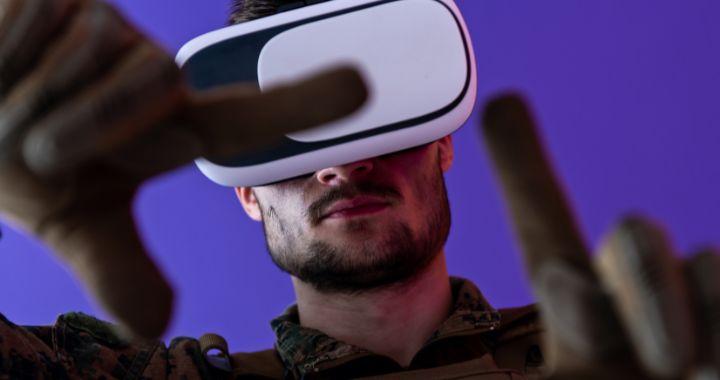The advancements in technology have greatly impacted every aspect of our lives, including the aviation industry. With the help of technology, aviation has become more efficient, safer, and faster. Many modern tools can be used in aviation training, such as flight simulators, which provide a realistic experience for pilots without the risks of actual flight.
One of the most exciting technological advancements in aviation training is the use of virtual reality. Virtual reality allows pilots to experience simulated flight in a safe and controlled environment. It provides an immersive experience that allows pilots to learn and practice skills in a realistic setting.
Virtual reality has even been used for air traffic control training, allowing controllers to practice in a simulated environment that mimics real-world scenarios. This technology has proven to be extremely effective in training. And has helped to improve safety management in the aviation industry. The concept of VR has existed since the 1960s. But it is only in the last decade that it has become widely accessible.
VR technology can be used in aviation training in various ways. For instance, it can simulate flying conditions, including turbulence, weather conditions, and takeoff or landing. It can also be used to train aircraft technicians, allowing them to visualize the internal components and identify problems. By using VR, aviation crew members can improve their skills, accuracy, and reaction times, making them better prepared for any situation.

Virtual Reality in Aviation Training
Virtual reality (VR) technology has revolutionized the aviation training process in recent years. This innovative technology has transformed the way pilots learn and practice their skills. VR training programs recreate real-life scenarios and simulate flight controls within a virtual environment, providing realistic training without the need for a real aircraft.
Traditionally, pilots learn to fly through a flight school where they are trained using flight simulators. They mimic real-life scenarios and also factor in how many pilots fly a plane.
These simulators require a large space and are very expensive to maintain. However, with the introduction of VR technology, the aviation industry can now offer a more cost-effective way of conducting training.
VR headsets allow pilots to perform the same tasks they would do in a real plane. Including the use of flight controls in a simulated flight deck. This means that pilots can gain an understanding of how to manage real aircraft before they ever set foot in one. VR technology has also enabled training programs that are adaptable and flexible, enabling different levels of knowledge and skill to be developed in a diverse range of scenarios.
Many aviation training institutions have embraced this new technology, including the Embry Riddle Aeronautical University, which has been able to achieve significant savings in its training programs through the use of VR technology.
Virtual reality is also able to provide an immersive experience that traditional simulators cannot.
Pilots are able to experience realistic simulations. And the technology has helped trainees learn the necessary skills faster than traditional simulators. Not only has VR training been adopted by civilian aviation training programs, but it has also been introduced in air force training programs around the world.
In addition to pilot training, virtual reality technology can also be used to train cabin crews and ground personnel. For instance, cabin crews can use virtual reality to simulate flights from check-in to landing, while ground personnel can use it to practice baggage loading and unloading, ground handling, and aircraft maintenance. This way, the technology can help improve efficiency and safety, ensuring that everyone involved in aviation operations is adequately trained.

Benefits Of Using VR In Pilot Training
Cost-effectiveness
One of the most significant benefits of using VR in pilot training is cost-effectiveness. The traditional approach to pilot training involves the use of simulators, which are costly to acquire and maintain. On the other hand, VR-based training systems are more affordable and require less maintenance. Additionally, VR systems enable pilots to train in a virtual environment, minimizing the need for actual flight hours, which could be expensive.
Immersive training
VR-based pilot training offers an immersive experience that simulates real-world flying conditions. VR training simulates weather conditions such as fog, turbulence, and storms, providing pilots with firsthand experience in dealing with unpredictable situations. The immersive nature of VR training also creates a sense of urgency and a need to make decisions quickly, which is critical in emergencies.
Risk-free training
VR-based training creates a risk-free environment, allowing pilots to experience various flight scenarios without the possibility of accidents. This feature is particularly beneficial in training novice pilots who are yet to develop the necessary skills and experience. VR training also allows pilots to practice emergency procedures repeatedly until they have mastered them.
Quality training
VR-based pilot training offers quality training by providing a safe and controlled environment in which to learn and practice. VR training also provides access to different scenarios that may not be easy to replicate in real life. Using VR simulations, pilots can practice instrument flying, engine failures, communication with air traffic control, and other critical skills in a controlled setting.
Flexibility
Virtual Reality in pilot training offers a high level of flexibility, allowing pilots to train at their own pace, time, and location. With VR-based training, pilots can access online courses, interactive simulations, and other training materials from anywhere in the world. This accessibility allows pilots to practice, learn, and upskill at their convenience, making it an ideal choice for busy pilots with limited time.

Unlock new heights in aviation training with the help of virtual reality technology!
The use of VR technology in aviation training has given pilots a significant edge when it comes to the learning process. Now, more than ever, virtual reality in aviation training has become an essential tool in the education of future pilots. It has aided thousands of pilots across the globe, through its cost-effectiveness, improved flight training process, and, ultimately, preparing them for flying a plane in real life.
For more information on all things aviation such as the best aviation organizations to join, the latest trends, and common things you need to know, visit our blog. While you are there, ensure you take out time to look through our options for Jet-Bed and select what’s best for your next cruise. Jet-Bed is the best way to sleep while in the air and it offers you comfort beyond your best expectations.

